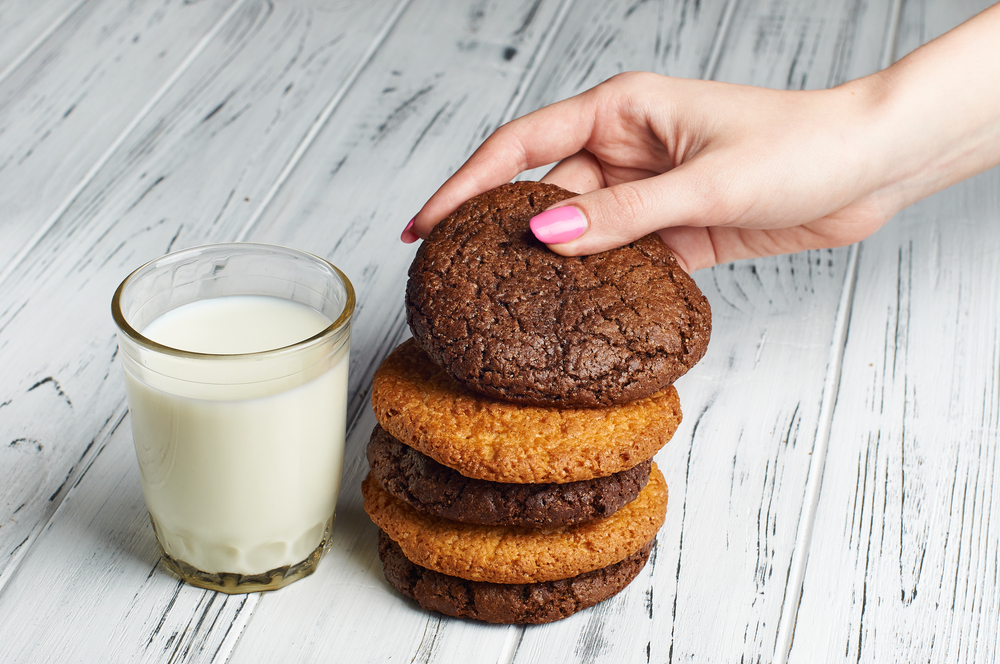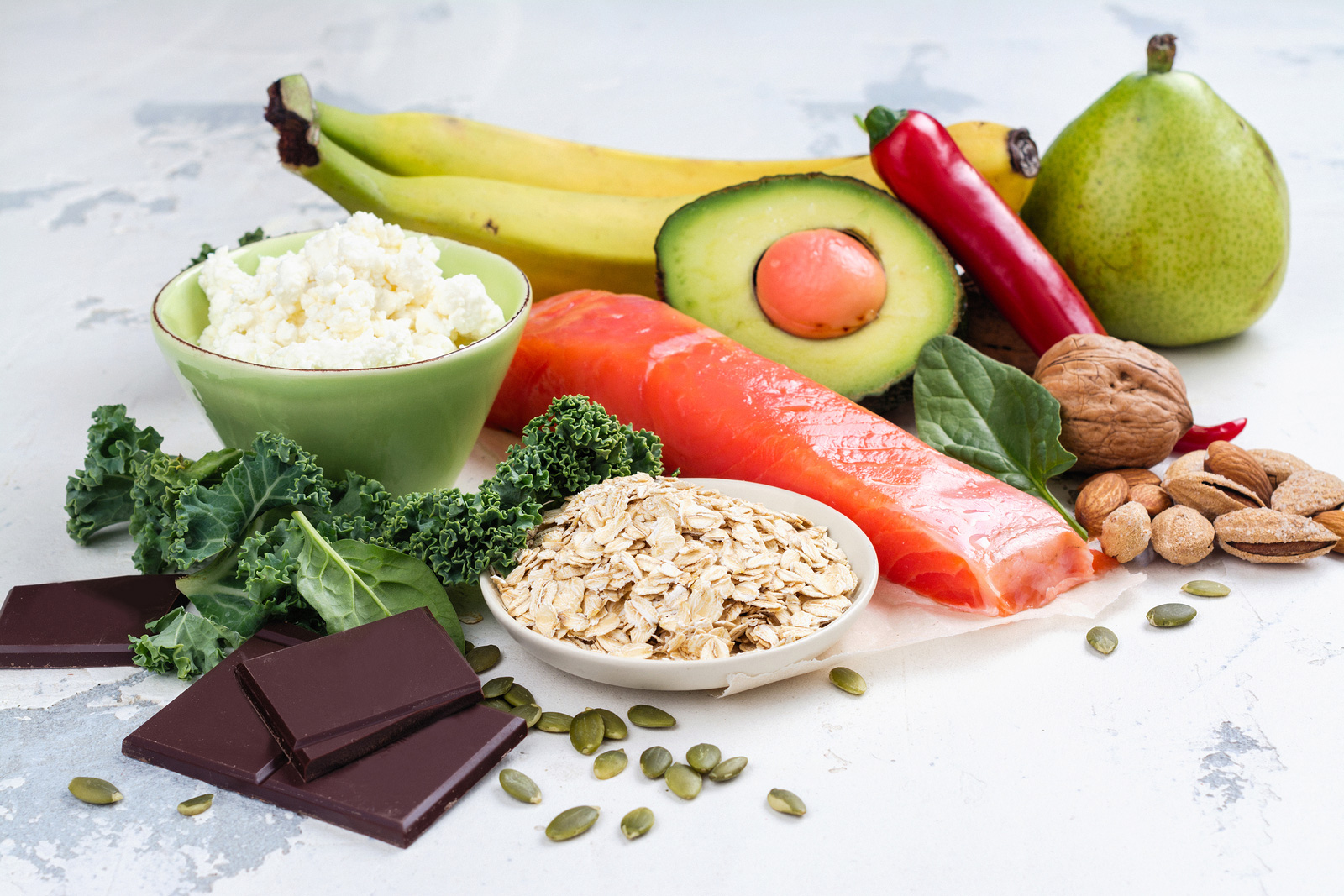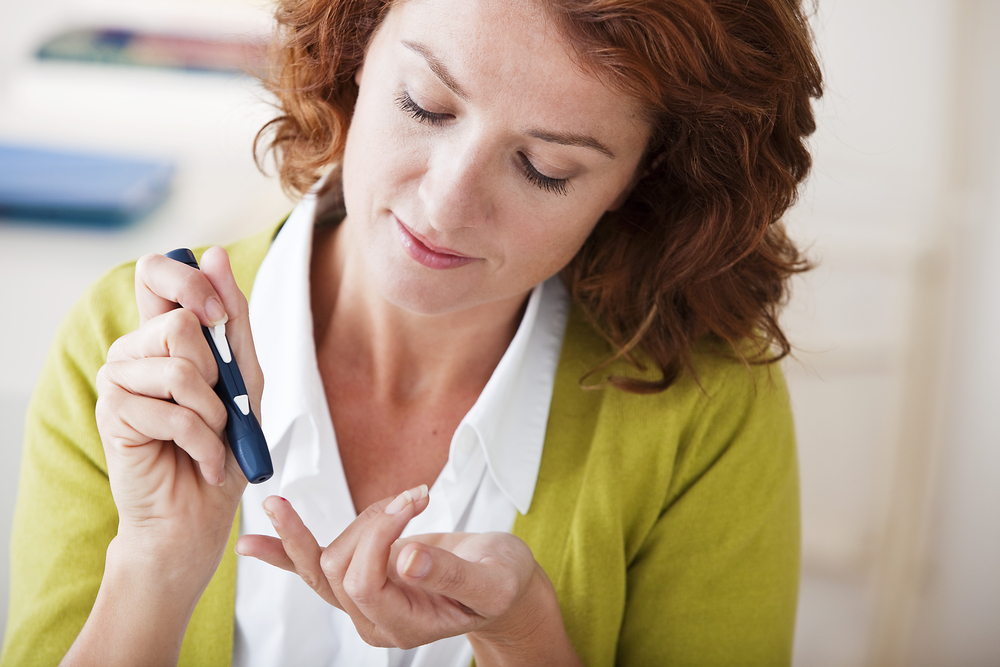How many times have you reached for a cookie or a bag of potato chips after a bad day? We’ve all been there, and I’m the first to admit that these foods feel good in the short-term. But preventing diabetes means focusing on long-term solutions — nutrition, exercise, balance!
In fact, a recent study done on over 3000 people at risk for diabetes showed that lifestyle interventions, such as weight loss and regular exercise, reduced the incidence of type 2 diabetes by 58%, whereas Metformin, a common antidiabetic drug, reduced it by only 31%. Additionally, whole foods rich in phytonutrients — such as those emphasized in the Mediterranean diet — have been shown to be favorable in lowering markers of insulin resistance. What all this research tells us is something that makes complete sense — that preventing diabetes through a holistic lifestyle approach is far easier and more effective in the long-term than any drug solution could ever be. And the first cornerstone of diabetes control is diet.
Nutrition — our food talks to our genes. If I had to pick the gold star in preventing diabetes, it would be food. What you eat can prevent and even control type 2 diabetes. At Women to Women we view food as complex information that our cells have been primed through the ages to receive. In other words, good food talks to your genes to keep things going just the way Mother Nature intended. Rising rates of type 2 diabetes should come as no surprise when you consider that the ways in which we grow and process our food have changed so drastically in just one or two generations, while our human genetic constitution hasn’t changed much in 40,000 years!
This might seem like a novel idea, but there is nothing revolutionary about the concept of balanced meals. This means that each time you sit down to eat, you should include protein, complex carbohydrates, healthy fats, and as many non-starchy fruits and vegetables as you can. This will help to keep your insulin levels in balance and make it less likely for you to store too much energy in the form of fat. And with insulin in good control, you will have better balance throughout your endocrine system, including other hormones like cortisol, estrogen and progesterone.
Insulin control is strongly affected by the glycemic index of the foods you eat. The glycemic index of a food is a measure for how quickly insulin rises in response to the amount of glucose entering your blood stream after you eat it. Foods high in protein tend to have a lower glycemic index than carbohydrates. Simple carbs, like white flour and sugar, have a higher glycemic index than complex carbs like whole grains and fresh fruits. Simple carbs can overload your insulin receptors and make insulin resistance more likely to develop. To prevent the quick sugar surge from high glycemic foods, balance each snack and meal with all four basic groups.
But it’s about more than just the ratio of protein to carbohydrate to fat in your diet. The plant kingdom has been quietly evolving alongside us humans for many years, and the micronutrients available in fresh, richly colored, organically grown fruits and vegetables are instrumental in preventing the diseases of modern life — including type 2 diabetes. So choose the best information your food dollar can buy, and remember that all four food groups play key roles in your digestion, metabolism and hormonal balance.
Exercise — move your body. Getting regular exercise is another excellent way to help prevent yourself from developing type 2 diabetes. Not only does it keep your weight down, but it lowers blood sugar, helps you utilize insulin more efficiently, keeps your cholesterol levels balanced, and improves circulation, thereby keeping your heart and blood vessels healthy and strong. Exercise also supports nervous system health and releases positive endorphins to boost your mood! The benefits are endless.
While cardiovascular exercise is specifically beneficial to your heart, toning muscle — through weight training, yoga, Pilates or swimming, for example — is also a great way to increase the activity of your insulin receptors and prevent insulin resistance. This is because of all the tissues in your body, your muscles use the most glucose, so they are most important for keeping your blood glucose levels steady. And once you learn how good it feels to move your body, you’ll be looking forward to fitting exercise into your schedule as much as possible!
Blood glucose — better regulation through diet and lifestyle. Of course blood glucose is important as well — it’s what we’ve been talking about getting into balance. For women who already have diabetes, it’s important to check blood glucose daily. But for those concerned with preventing diabetes, I recommend getting it checked a couple times a year to see if it’s trending upward.
As I mentioned above, a normal fasting blood glucose should be well under 100 mg/dL, but it is much more important to watch the trend. Once you go above 100 mg/dL, you are considered prediabetic, which usually means that your blood glucose levels are somewhere between 100 and 126 mg/dL — higher than normal, but not high enough to be considered diabetic. You are insulin resistant at this point and much more likely to develop type 2 diabetes and other factors associated with metabolic syndrome — unless you step in.
Rather than focus on the numbers, know that you have much more control over blood glucose by eating well and getting more exercise. Astoundingly, 65% of diabetes patients die from heart disease or stroke, which tells us that treatment should be about more than just glucose control. Making lifestyle changes allows you to reap huge benefits in blood sugar control right away.
Emotions — feed your soul! You can’t go wrong with good diet and plenty of exercise, but at Women to Women, we understand that there’s more to this equation than just eating right and exercising. And that’s the emotional piece. Reaching for sugar may be a sign that you’re lacking sweetness in your life. I want you to think about all the things that make you happy and consider the possibility that these things nourish you in profound ways that your food — no matter how impeccable — cannot. Whether it’s spending more time with your children, relaxing on your own, painting or digging around in the garden, giving yourself time to do the things you love will have a positive effect upon all your systems — from your heart to nerves to immunity to metabolism.
Just remember that feeling better means looking at the whole picture — your happiness, nutrition, exercise habits, hormonal balance, blood pressure, and cholesterol. But while we always encourage women to start inward on a quest for overall health and diabetes prevention, it also makes sense to look at what’s all around you.
Diabetes and our environment
From the four pillars outlined above, we can begin to see how the rising rates of diabetes may be the result of a complex interplay between our genes and environmental influences. It stands to reason, then, that scientists are starting to look more closely at how our environment affects our risk of diabetes. No one will argue with the fact that as modern technology surges on, we benefit from lots of conveniences. But along with all these conveniences we’re also taking in the heavy metals and man made toxins that come with them. Materials used to create plastics, pesticides, household cleaners, flame retardants, rugs and furniture, computers — even white paper — all contain what are known as endocrine disruptors. And many of these foreign molecules have been shown to mimic the action of hormones in our bodies.
Since hormones turn on and off bodily functions, open cell doors, keep our moods stable, and so much more, it makes sense that endocrine disruptors could contribute to a shift in insulin production or utilization in the body. In fact, a recent study found that exposure to the specific kind of endocrine disruptors known as persistent organochloride pollutants (POP’s) may contribute to the development of type 2 diabetes.
Keep in mind, however, that endocrine disruptors are most likely not the primary cause of type 2 diabetes, though they certainly may contribute. And the good news is that there are many things you can do in your life to limit your exposure to these unwanted disrupters. Start by throwing out your plastic food containers and replacing them with glass, avoiding the use of plastic in the microwave, and giving your body a chance to recover by implementing regular detox and drinking more water.
There are lots of ways to help yourself when it comes to the prevention of type 2 diabetes. Just remember to look at the whole picture.
The Women to Women approach to reducing your risk of diabetes
At Women to Women, we believe you are the most important caretaker of your body. This leaves you with choices when it comes to what you eat, whether you exercise, and the spaces with which you surround yourself. This can be a powerful — and, for some women, overwhelming — concept.
But making better choices doesn’t have to be difficult. Start by determining where you are and what your goals are. You may want to put it all down on paper. We find that articulating and defining what we want and don’t want in life can help us more easily achieve our greatest desires.
Here are a few ideas to get you started:
- Move toward healthier meals and snacks. It may be true that fast food is less expensive and more expedient than buying fresh whole foods and cooking yourself, but keep in mind the old adage: Food is the cheapest medicine you can buy. And when you do need to eat in a hurry, even making different fast food choices can make a world of difference. Chose the grilled chicken instead of a cheeseburger next time. Or simply drink water instead of soda with your meals. Be sure to include the four food groups in all your meals, and don’t forget to check the labels for trans fats and high-fructose corn syrup. Remember that you don’t have to do everything all at once. Little by little, making better food choices will help you reverse your insulin resistance within weeks. You may find our articles on nutrition helpful as you prepare to balance your meals.
- Strive for regular physical activity. We don’t advise jumping right into the recommended 40 minutes a day if you haven’t exercised in a while. Just start by doing something active a few days a week. Getting into the habit of moving your body and increasing your heart rate is what counts. Be sure to talk with your healthcare practitioner about what forms of exercise are safe for you. Proceed from there to find an activity that fits your life. Nearly everyone can benefit from walking more. Before you know it, you’ll work up to a longer period of exercise and start to feel all the positive results!
- Enhance your nutrition with vitamins and minerals. Our cells are constantly using micronutrients in their everyday functions to produce energy and keep us thriving. Diabetes and prediabetes compromise the nutrients our bodies are able to take up, which can lead to nutritional deficiencies. Adding a high-grade multivitamin/mineral complex and supplemental omega–3 fatty acids will help fill in any nutritional gaps, regulate hormones such as insulin, and protect your body from the complications associated with diabetes. In fact, certain vitamins, minerals, and phytonutrients have been shown to be particularly helpful in terms of insulin resistance and diabetes.
- Detox your personal environment. Avoid unnecessary chemical exposure by using glass instead of plastic to store your food and drink. Never use plastic in the microwave, or avoid the microwave altogether. Make a point to use all-natural cleaning products and cosmetics, and drink plenty of water.
It will also help your health on all levels, including your endocrine system, to limit time you spend in stressful relationships and environments. As scientists are now discovering, stress takes a heavy toll on our bodies. Ironically, the very technology invented to save us time, such as laptops, cell phones and e-mail, may afford us less time to decompress. Make time to relax and get away from the pressures of life. Even if it’s just a one day yoga retreat, a walk on the beach or an hour-long bubble bath, taking a holiday from stress is never a bad thing for your body.
- Consider other complementary treatments. As you may understand by now, diabetes is a complex disease. It manifests itself differently in each individual and the preventative methods that work for some may not be enough for you. Certain complementary treatments have shown positive effect in managing the risk factors leading to diabetes, and may be worth looking into. Whatever course of treatment you pursue, remember to work closely with an experienced practitioner for the best results.
Find the sweetness in your life!
Learning how to prevent type 2 diabetes changes the way we look at everything — the way we eat, travel, exercise, work, and view the world around us. And, trust me, all of this is for the better! It can certainly feel overwhelming sometimes. It helps to remember that you can’t change everything in one day — nor should you try. Revising our habits takes time and commitment.
At Women to Women we believe in balance, which is achieved through a dynamic equilibrium between forces. There are positives to every negative, and though preventing diabetes may seem daunting, what it requires is for you to pay more attention to your body and do what makes you feel good in the long run. This is never a bad thing. Embrace the chance to take better care of yourself, and before you know it life will be sweeter than you ever imagined possible!







